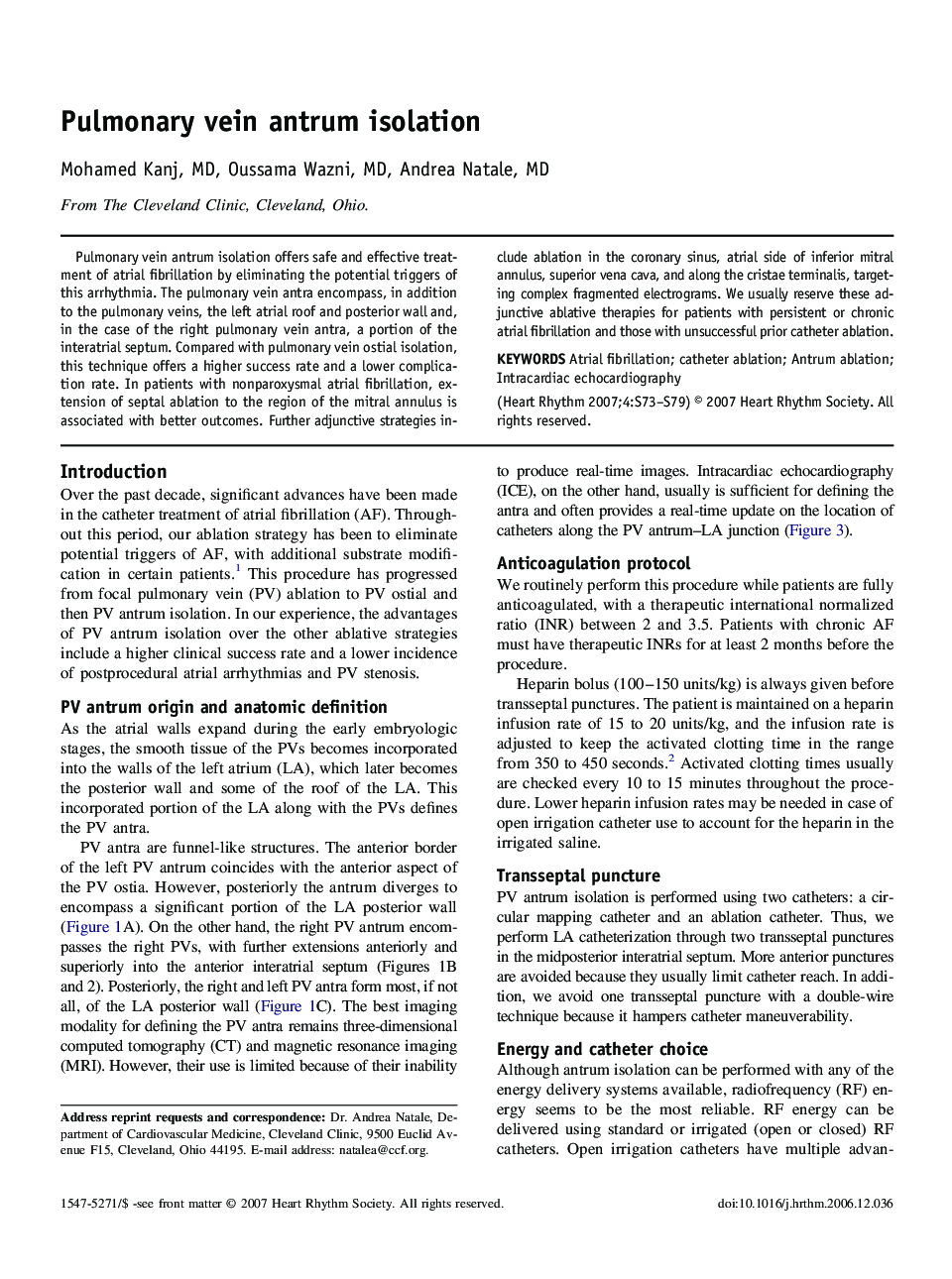| Article ID | Journal | Published Year | Pages | File Type |
|---|---|---|---|---|
| 2925501 | Heart Rhythm | 2007 | 7 Pages |
Pulmonary vein antrum isolation offers safe and effective treatment of atrial fibrillation by eliminating the potential triggers of this arrhythmia. The pulmonary vein antra encompass, in addition to the pulmonary veins, the left atrial roof and posterior wall and, in the case of the right pulmonary vein antra, a portion of the interatrial septum. Compared with pulmonary vein ostial isolation, this technique offers a higher success rate and a lower complication rate. In patients with nonparoxysmal atrial fibrillation, extension of septal ablation to the region of the mitral annulus is associated with better outcomes. Further adjunctive strategies include ablation in the coronary sinus, atrial side of inferior mitral annulus, superior vena cava, and along the cristae terminalis, targeting complex fragmented electrograms. We usually reserve these adjunctive ablative therapies for patients with persistent or chronic atrial fibrillation and those with unsuccessful prior catheter ablation.
